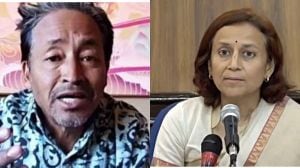J-K on Naga cue, to hand over depts to grassroots
Jammu and Kashmir is drawing inspiration from Nagaland. The latter’s model of ‘communitisation’, which hands over ownership o...

Jammu and Kashmir is drawing inspiration from Nagaland. The latter’s model of ‘communitisation’, which hands over ownership of government assets and the responsibility of running them, to a village or town, is fast gaining popularity.
‘‘We are benchmarking the communitisation programme as a best practices and circulating it to other state governments,’’ said Panchayati Raj secretary Wajahat Habibulah. ‘‘This is also being used in the Panchayati Raj Act of Jammu and Kashmir.”
The Nagaland Government had written to the Ministry of Personnel and Training, and last week, made a presentation before Health, Power, HRD and Panchayati Raj ministries. Nagaland has implemented the concept in health, education and electricity management since 2002.
In education and health, boards or committees with representatives from villages/ town wards were set up. Governmental powers and functions were transferred to them, including disbursement of salaries and adoption of a ‘‘no work, no pay’’ principle for government employees. In the power sector, management boards with community members were set up and monitoring of supply handed over with metering at source.
A government of Nagaland and Unicef impact study — Communitisation and Resurgence of Naga Social Capital—conducted in September, 2004, found the model had a positive impact in all three sectors.
In education, it found that enrollment of boys and girls steadily improved in community schools with zero dropouts in 23 of 28 villages. Teachers’ attendance improved to over 90 per cent in 18 of 28 schools.
A 50 per cent increase in children accessing health centres was seen, besides better availability of quality medicines. In power, the study found boards verified consumption, prepared bills and collected payments and were given a 20 per cent rebate on bills.






- 01
- 02
- 03
- 04
- 05

























